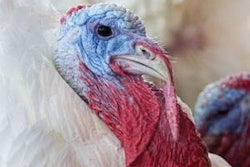The University of Illinois College of Agriculture has announced a new scholarship opportunity supported in part by the Illinois Soybean Association for a degree program majoring in Crop Sciences. This development is being offered in response to declining enrollment in programs for graduate students interested in aspects of soybean cultivation.
The United States has traditionally led the world in technology as evidenced by the strength by our seed-producing companies, our high yields and innovations in all aspects of crop production. Corn and soybeans are the basis of all intensive livestock production and contribute both directly and indirectly to human food needs. As the number of farmers in industrialized countries shrinks and world populations grow, this disparity will require ever increasing efficiency and yields.
The Green Revolution was the brainchild of the late Professor Norman Borlaug who developed and disseminated new varieties of wheat which saved countless millions from starvation.
The urbanization of our population which has increased in intensity through the past generation has deprived many of our matriculants to Land Grant colleges of an awareness of agriculture and the need to apply a wide range of disciplines to enhance productivity. The inducement offered by the University of Illinois should be reflected in other disciplines and to livestock species.
Colleges of Veterinary Medicine have no shortage of applicants but the preponderance of graduates undertake companion animal practice in cities and suburbs. There is a growing shortage of graduate-trained veterinarians in food animal medicine with specialized knowledge of swine, poultry, beef and dairy production. While there is a place for the traditional food animal practitioner involved in clinical medicine the new model requiring the integration of epidemiology, economics, nutrition and management has yet to be emphasized in curriculums. The new dimension of welfare is now being added to the mix requiring even broader interdisciplinary training.
In discussion with colleagues at Land Grant universities there appears to be a dearth of undergraduates selecting aspects of agriculture as their major. Recent reductions in funding and difficulty in obtaining visas for international students has sharply curtailed the availability of graduate students especially from Asia. Some of these students remain in the U.S. after completion of doctoral level programs contributing to both academia and industry. Those that return home are able to apply their knowledge to local problems and to alleviate hunger through more efficient production.
Education, as with many endeavors, requires commitment and up-front investment. It may be some time before the benefits of the Illinois program are realized as with many agricultural enterprises. Providing prospective students with promotional material is worthwhile. Making available stipends and educational loans which could be paid back through service is required to fill the ranks left by retirement and migration to other more remunerative fields. Despite the many problems which confront our administration and Congress policy makers in both branches of government should anticipate the growing problem and appropriate funding to programs which are directed at future educational and research opportunities in agriculture.


















